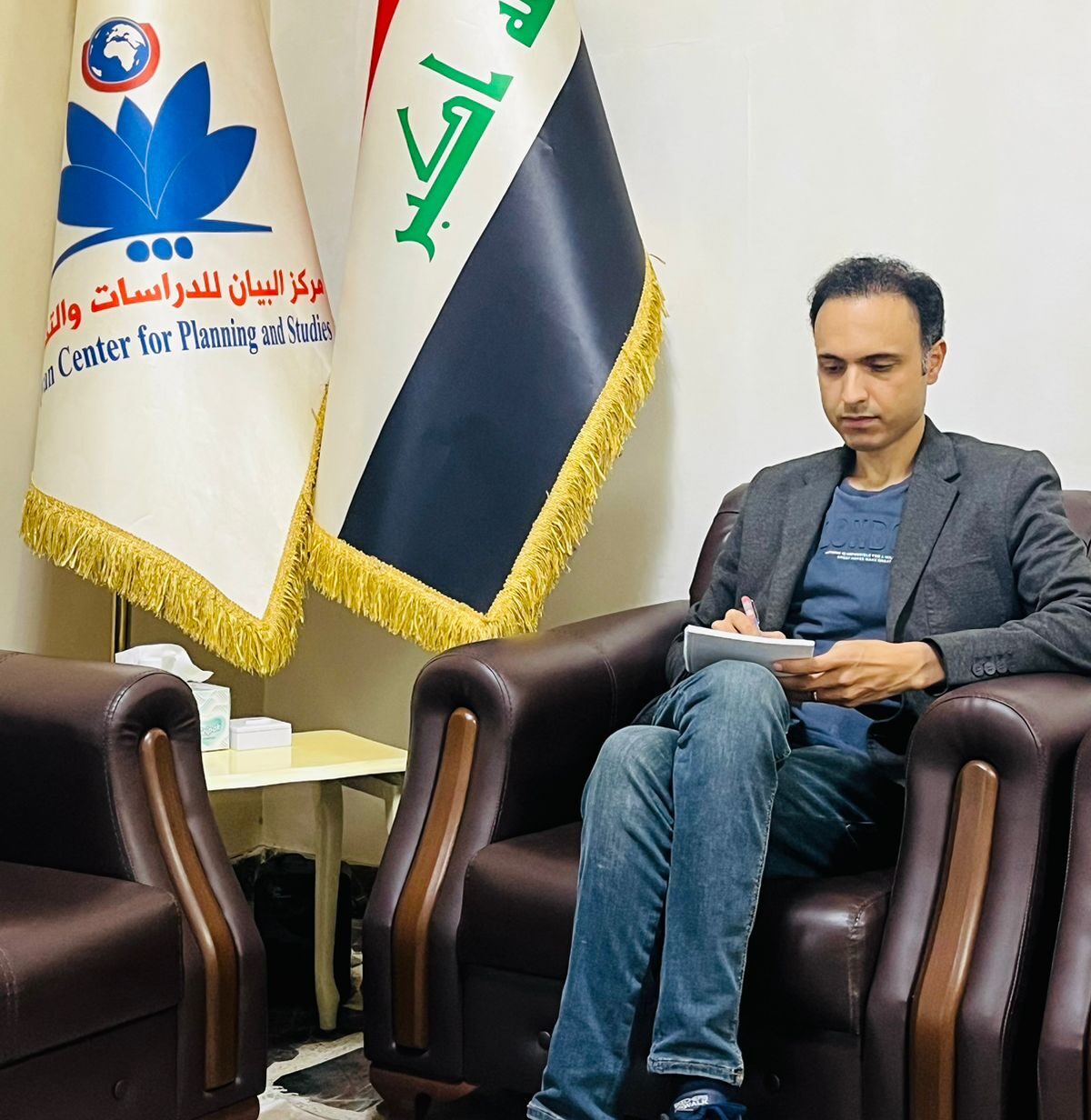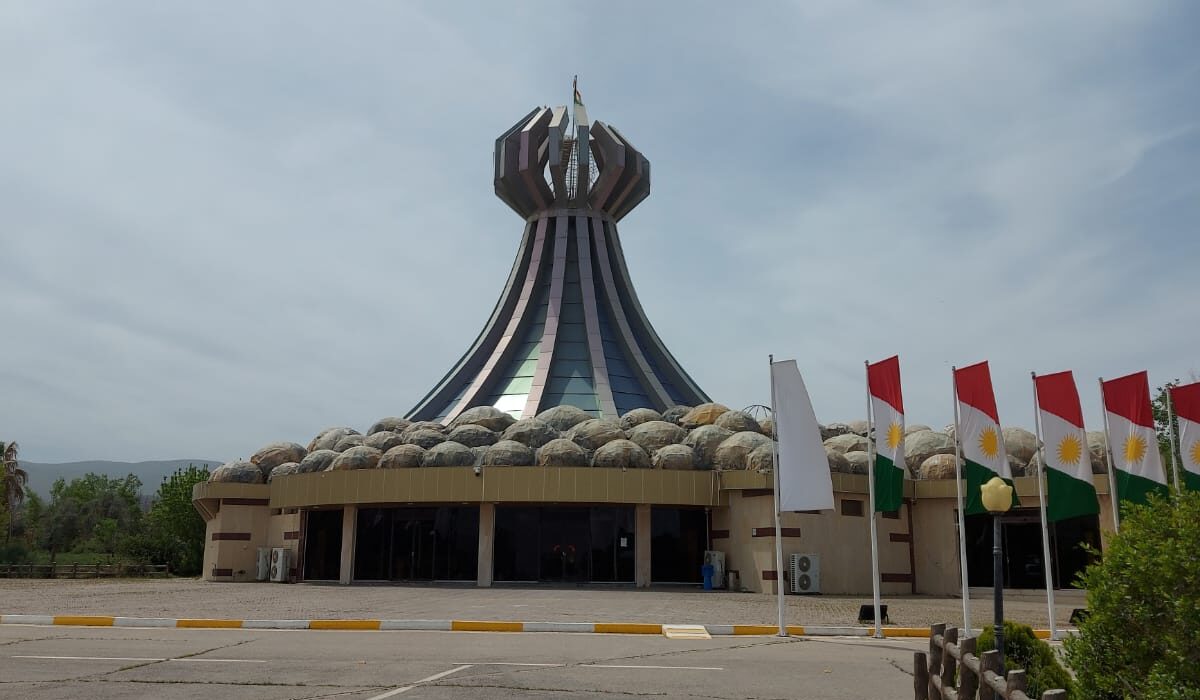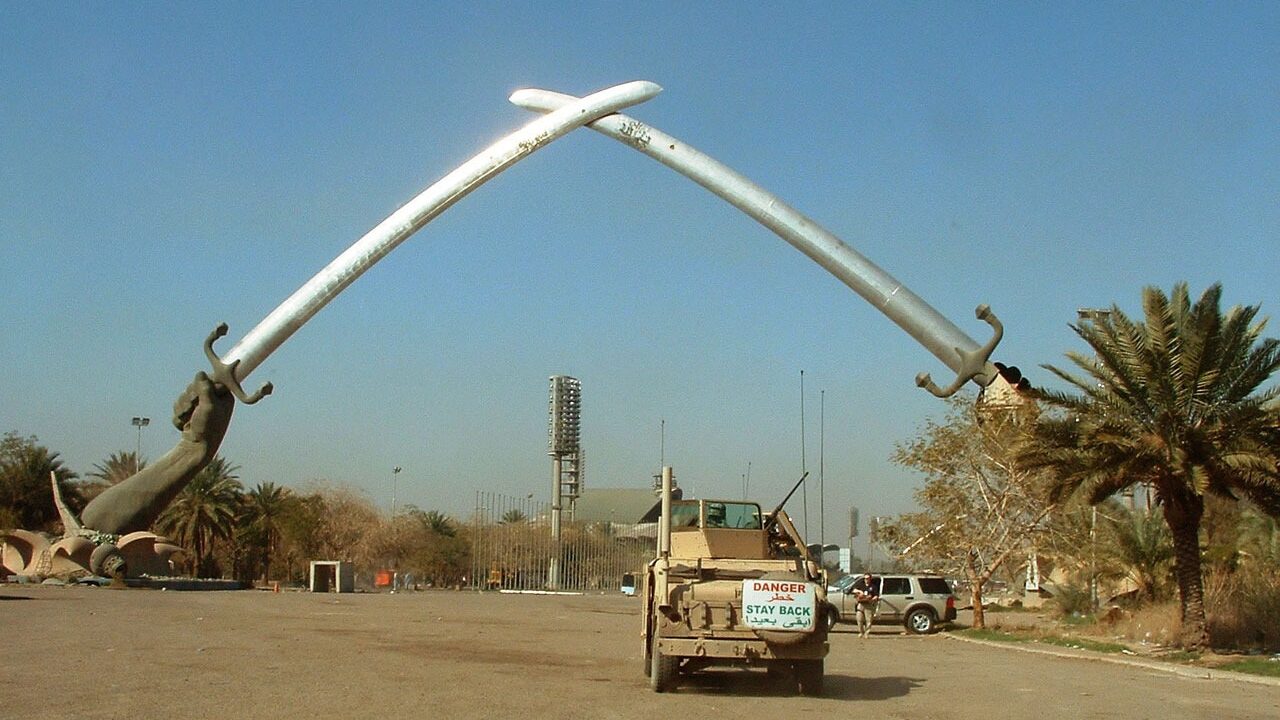20 Years After US Invasion, Iraqis Reflect on Missed Opportunities To Rebuild
Sectarianism and lack of economic opportunities characterize post-invasion Iraq
[Baghdad] Iraqi officials regret missing an opportunity to rebuild following the fall of the Ba’athist regime 20 years ago, The Media Line has learned in exclusive interviews.
“Iraq entered a period of darkness and sectarian fighting that we have been trying to overcome since the fall of the regime two decades ago,” Ali Taher, director of the Al-Bayan Center for Planning and Studies, an independent think tank based in Baghdad, told The Media Line.

Ali Taher, director of the Al-Bayan Center for Planning and Studies, Baghdad, Iraq. (Owen Holdaway/The Media Line)
From 1968 until 2003, Iraq was ruled by the Arab Socialist Ba’ath Party, which was led from 1979 onward by Saddam Hussein. The period was characterized by initial economic progress as well as sectarian violence.
According to the Al-Bayan Center, many of the problems that developed following the fall of the old regime were caused by the fractious political and economic system installed by the US.
“There is an exaggeration about the existence of social and political divisions within Iraqi society on the basis of Sunni, Shiites, and Kurds, which the Americans emphasized after 2003 and the fall of Saddam Hussein,” Taher explained.
“But this is not true. Iraq was not as divided as the Americans say. … Iraqi society has coexisted for many centuries, but this problem of sectarianism was ‘created’ in the post-war period by the encouragement of competing political parties,” he continued.
Taher described the creation of these political and economic divisions as the downfall of Iraqi society.
He pointed to Iraq’s continued reliance on the oil and gas industries as an example of the state’s failure to rebuild. “Economically, the state was unable to develop other sectors. We are still relying heavily on oil and gas, which [have] expanded [their] ministries and salaries, but there has been no real encouragement for other industrial and agricultural sectors,” he said.
Taher explained that the failure to diversify had prevented the country from developing economically and had especially affected young people.
“We have more than 750,000 young people who enter the labor market annually, and there are not enough job opportunities for them. … The Iraqi system of governance has not encouraged the private sector to develop,” he said.
On April 9, 2003, just three weeks into the US invasion of Iraq, American troops entered Baghdad and pulled down the statue of Saddam Hussein, symbolically ending over three decades of Ba’athist rule.
Statue of Saddam Hussein toppled to cheers from crowd, Baghdad, Iraq, April 9, 2003. (Getty Images)
“When we saw Saddam’s statue fall, it was a dream for the majority of us Iraqis before 2003,” a Kurdish resident from Erbil in northern Iraq who asked to remain anonymous, told The Media Line. “We were all sure and felt that Saddam being toppled down was now to be connected to a new Iraq, an Iraq associated with democracy, fairness, and a happy life.”
The Kurdish minority was one of the groups that suffered most under Saddam’s rule, especially during the 1980s, when the Ba’athists violently suppressed a Kurdish uprising during the Iran-Iraq war.
“We Kurdish suffered terribly under Saddam – the Halabja attacks killed over 5,000 Kurds in 1988 – so for us, the fall of the regime had even more significance, as we had been the main victim of Saddam’s dictatorial behavior,” the 38-year-old said.
During the 1988 Halabja chemical attack, the Iraqi army dropped mustard gas on the town of Halabja, which was mostly populated by civilians. According to estimates, between 3,200 and 5,000 people were killed in the attack, and between 7,000 and 10,000 were injured.

Monument at Halabja where Saddam Hussein used chemical weapons on Iraqi Kurds to suppress uprising. (Owen Holdaway/The Media Line)
The Kurdish source, like many others, felt that opportunities to rebuild were squandered following the fall of the old regime.
“Many things for the Kurdish improved. We got a regional government. We got more rights. But as with the rest of the country, we are having to deal with and solve many problems that arose in this post-Saddam era,” he said.
Following the collapse of the old regime, the US disbanded the Iraqi Ba’ath party and wrote a new constitution. Many experts understand the disbanding of the ruling party and the hasty rewriting of the constitution as the causes of Iraq’s later problems.
“No one denies the dictatorship of Saddam Hussein,” Abdul Salam, who worked in government media institutions at the time, told The Media Line. But “the arrogance of George Bush Jr. [then-US President George W. Bush], supported by [then-UK Prime Minister] Tony Blair, caused this mess. … Since the US invasion, the Americans brought to power people who are mentally ill, who valued stealing public money and loved sectarian revenge.”
Salam, speaking from near Mosul, a mostly Sunni city in northern Iraq, said the political vacuum and ensuing corruption that followed the invasion particularly hurt the Sunnis in the North.
“The proof is that after 2003, al-Qaida and ISIS leaders escaped from Iraqi prisons. There were no extremists in Iraq before,” Salam said. “And then look what happened in Mosul in 2014. The Iraqi army could not withstand the attack of 400 of these ISIS prisoners. They captured our city. This is what destroyed Mosul, this corruption, this corruption in the Iraqi army and state.”
In the streets of Baghdad as well, residents expressed disappointment regarding Iraq’s failure to rebuild after the invasion.
“Since the old regime fell, Iraq has entered a period of darkness and sectarian fighting. Now that we are remembering this 20th anniversary, Iraq is still trying to get out of this crisis,” Ali, a Shiite resident from the Karrada district of Baghdad told The Media Line.
Sitting in a local coffee shop, Ali reflected on the changes that the country has undergone since the fall of the regime. “Some things have improved. Look, we are here, we are free to have coffee and talk. However, we have not overcome this sectarianism that has hurt our country.”
According to the leading British polling agency Opinion Research Business, more than 1 million Iraqis have died as a direct or indirect result of the US invasion. Now, Iraq is relatively stable – only around 100 Iraqis have died due to war so far in 2023 – but the immense loss of life following the invasion continues to characterize post-invasion Iraq.
“Twenty years have passed, and Iraq entered into a dark period of sectarian killings, and this is the true message of this anniversary,” a Baghdad resident named Mustafa, who lived through the height of the Sunni-Shiite killings of 2006-2007, told The Media Line.


